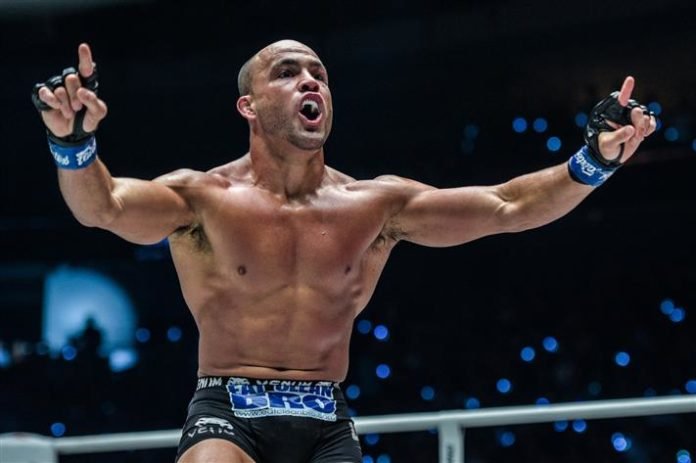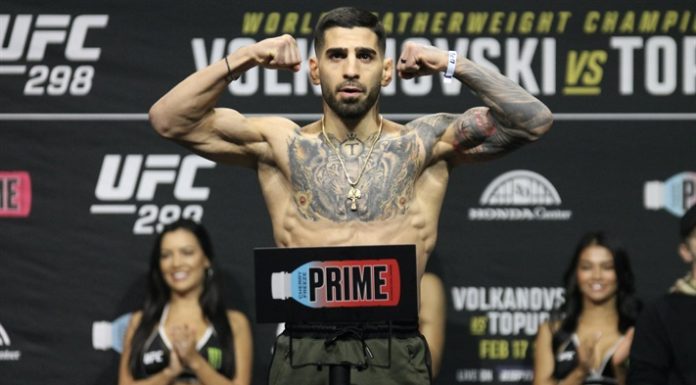
Bellator 106 in the end was over ambitious, but an all-time classic battle between Michael Chandler and Eddie Alvarez ended up saving the event in the memories of the fans.
On another off-week for major mixed martial arts action, Cageside Press looks back at a classic event in the history of the sport. For this holiday, we reflect on Bellator 106 on November 02 in 2013.
Though the landscape of mixed martial arts has changed drastically since 2013, one thing has remained the same: it is difficult to put on a successful pay-per-view. The UFC has largely built a monopoly on holding pay-per-view events behind their brand recognition and promotional resources. With one pay-per-view event per month on average, the room for most die-hard fans to allocate funds for a non-UFC MMA card often seems non-existent.
That is what made Bellator 106 so interesting. After years of being the kid brother to the booming UFC, Bellator was set to make their first foray into the pay-per-view business. Until then, the company had aired exclusively on cable television and was largely known for using their tournament format to build stars like Eddie Alvarez, Ben Askren, Douglas Lima, and Hector Lombard.
For their first night on pay-per-view, Bellator stacked the event with the biggest fights they could make with their roster. The centerpiece was set to be a battle of former UFC champions and free agent signings in Quinton “Rampage” Jackson and Tito Ortiz who were set to make their Bellator debuts. In the co-headliner, lightweight champion Michael Chandler and former champion Eddie Alvarez were scheduled for a rematch of their Fight of the Year candidate two years prior. The undercard also featured featherweight champion Pat Curran taking on Daniel Straus, the heavyweight tournament final between Cheick Kongo and Vinicius Queiroz, and the final of Bellator’s reality series Fight Master with UFC veteran Joe Riggs taking on Mike Bronzoulis.
On paper, the card was about as good as Bellator could hope to put on with the talent and star power available. The promotion invested heavily into promoting the event, with the commercial running during most programming breaks on Spike TV and the card being a frequent talking point during the events leading up to it. But the question remained, would fans pay for the pay-per-view when the only product for years that they had paid for was from the UFC?
Fight day! Three titles are on the line, including @MikeChandlerMMA vs. @Ealvarezfight live at 9/8c on @SpikeTV. pic.twitter.com/GjogUdhccL
— Bellator MMA (@BellatorMMA) November 2, 2013
In the end, the jump to pay-per-view (at the time) was not meant to be. Roughly a week out from the event, it was announced that Ortiz was out of the fight due to a neck injury which led to the card being demoted from a pay-per-view to becoming another free card on Spike. A day later, the bout between Kongo and Queiroz was also rescheduled due to an injury to Queiroz.
The action that night at the Long Beach Convention Center was a slow burn. After a solid start to the prelims and a first round finish to open the main card, the card saw three straight decisions that included two five round fights. It seemed as if the proverbial MMA Gods had simply conspired to put a damper on the evening. By the time the main event rolled around, all the anticipation had funneled into whether Alvarez and Chandler could deliver once again. What happened next made everyone forget most of what had taken place earlier in the night.
Alvarez and Chandler went back-and-forth in a battle that many argue was even more competitive and exciting than their first. After being stopped in the fourth round in the first fight, Alvarez rallied to have a strong finish in the final round of the rematch that was enough to get him the nod in a split-decision. With one victory apiece and two Fight of the Year candidates in the books, then Bellator President Bjorn Rebney said that having the two potentially headline a pay-per-view with the rubber match was a no-brainer.
Look what's in the works! Who's ready to complete the trilogy? @Ealvarezfight @MikeChandlerMMA pic.twitter.com/aFUxK7lw4w
— Bellator MMA (@BellatorMMA) January 10, 2014
Unfortunately, the third fight never materialized.
Rebney did indeed schedule the trilogy as the pay-per-view headliner months later, but an injury to Alvarez forced him to withdraw. Alvarez would then enter a contract dispute with Bellator, being inactive for nearly a year before being granted his release. Alvarez went on to sign with the UFC and won the championship in 2016. He would leave for ONE Championship in free agency a little over a year before Chandler came to the UFC. The two remain even at one victory apiece over the other.
Months later, Bellator would go on to finally hold a pay-per-view, but it was far from what was expected at Bellator 104. Quinton Jackson headlined the event against tournament finalist Muhammed Lawal. Tito Ortiz competed in the co-headliner against middleweight champion Alexander Shlemenko who was moving up in weight. Some of the names that rounded out the included future UFC contender Alexander Volkov and current Bellator star Michael “Venom” Page.
The sales of the pay-per-view did not do well enough to make another attempt a priority, although they did try again in 2018. Today, the pay-per-view business for combat sports as a whole has been reinvented. The UFC remains king for MMA, but now sees more competition than ever before with offerings from boxing, bare-knuckle, and the hybrid events from Triller. Superstars like Canelo Alvarez have blown up the pay-per-view model, forgoing traditional pay-per-view contracts to now negotiating for more money in a flat rate up-front to compete on streaming services like DAZN.
On paper, Bellator 106 may seem like the night that Bellator was in over their head and paid the price for it in losing their pay-per-view headliner. However, the electric lightweight clash lives on as the bout that made bonafide MMA stars out of Eddie Alvarez and Michael Chandler. Alvarez entered the UFC as an immediate contender, a rarity in today’s game. Chandler went on to become one of the best fighters in Bellator history and was considered one of the best talents outside of the UFC until getting to finally enter the Octagon earlier this year and compete for the title. Today, Bellator has never been bigger and it is off the back of continuing to build on ambitious events like Bellator 106.





















